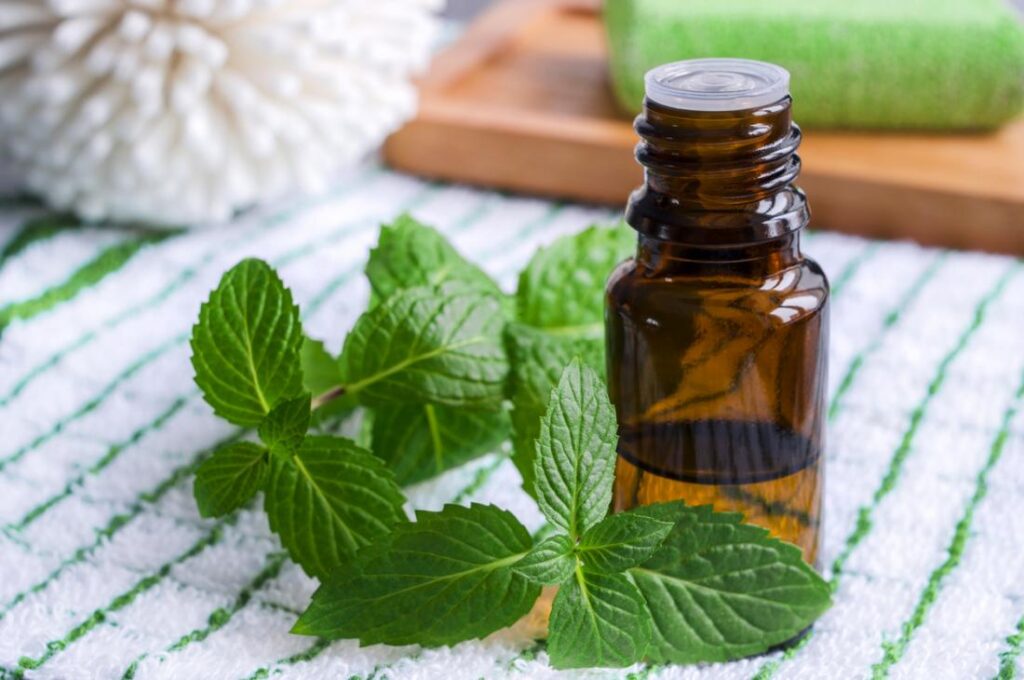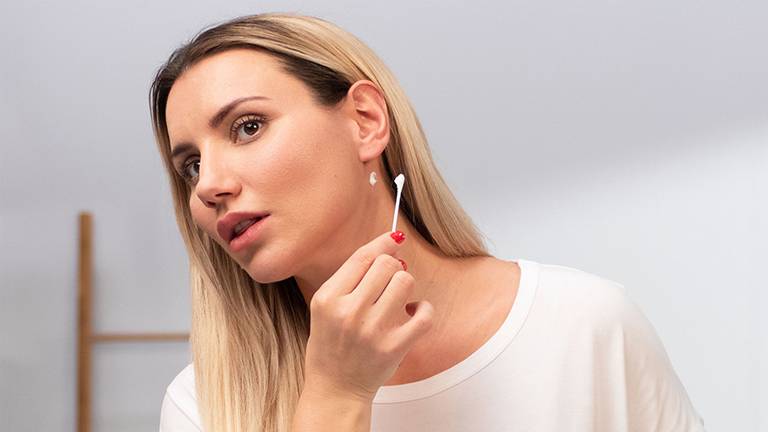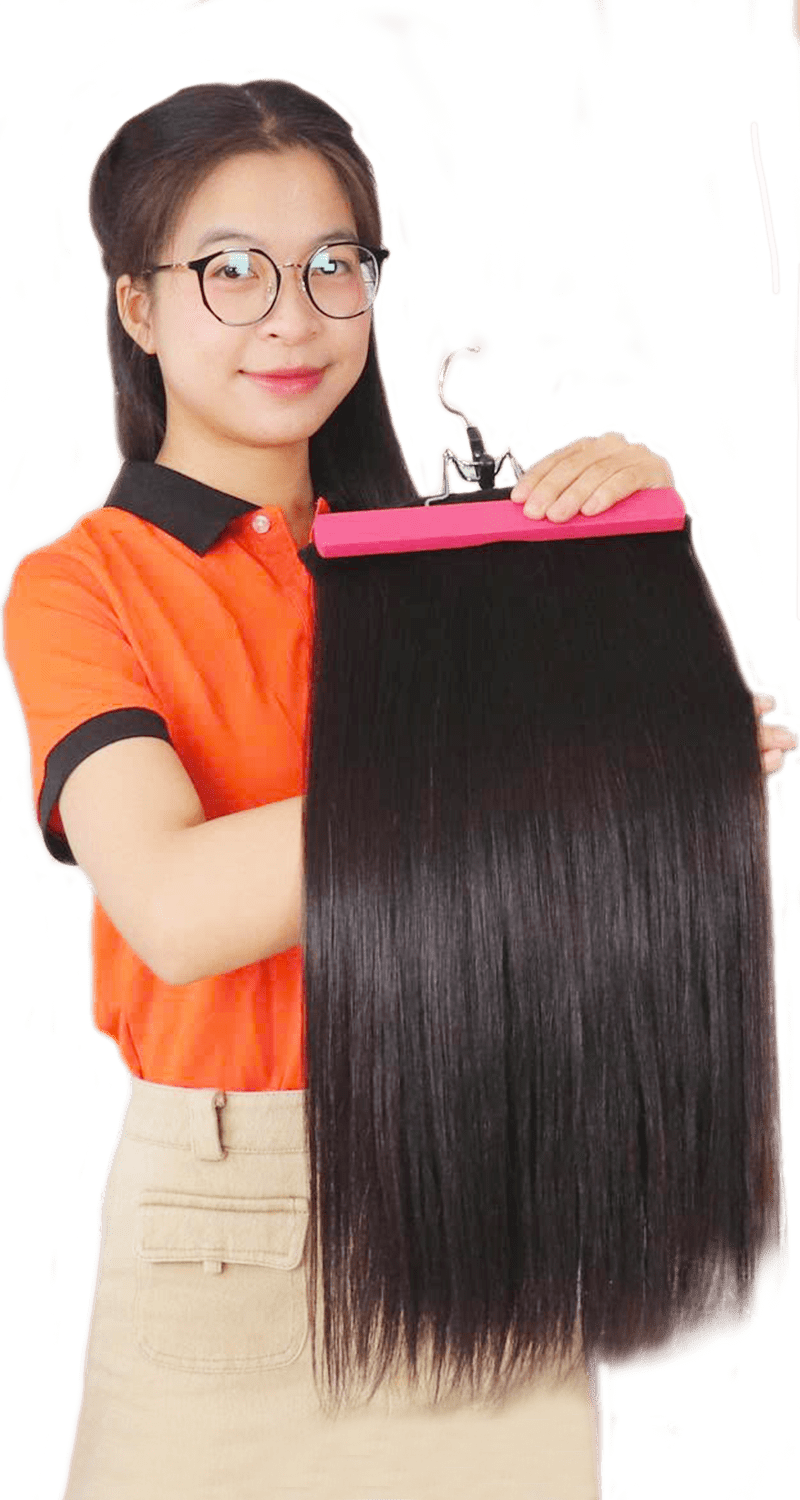In the world of hair care, there’s a hidden gem that has been creating waves – Peppermint Hair Oil. With its invigorating scent and a myriad of benefits, this hair oil has become a go-to solution for those seeking to transform their locks into a cascade of health and vitality. Join us as we exploring its incredible benefits and discovering the art of incorporating it into your hair care routine. Get ready to embark on a journey toward healthier, shinier, and more vibrant hair. Peppermint Hair Oil is not just a beauty trend; it’s a time-tested remedy that has earned its place as a must-have in the realm of natural hair care.
I. Peppermint Hair Oil: Benefits
Peppermint oil is known for its refreshing and invigorating properties, and when used, it may offer several benefits. It’s important to note that individual responses can vary, and it’s advisable to perform a patch test before using any new product. Here are some of the potential benefits:

1. Peppermint Hair Oil Can Promotes Hair Growth:
Peppermint oil has been suggested to stimulate blood circulation when applied to the scalp. Improved blood flow can enhance nutrient delivery to hair follicles, potentially promoting hair growth. Using it directly on the scalp can create a healthier environment for your hair to grow beautifully.
2. Fighting Off Dandruff and Scalp Infections

Did you know that peppermint oil can effectively treat dandruff and scalp issues? Peppermint oil has antimicrobial and anti-inflammatory properties, which may help reduce dandruff and soothe an itchy scalp. The natural properties that fight against fungi and bacteria may help alleviate scalp irritation and redness. Besides, the menthol in peppermint oil provides a cooling sensation, which can be refreshing and invigorating. This can contribute to a soothing and calming effect on the scalp.
3. Peppermint Hair Oil Can Controls Oil Production:
Peppermint oil may help in balancing the production of sebum (natural oil) on the scalp. This can be beneficial for those with oily hair or scalp issues. Not only that, strong hair follicles are less likely to fall out which is uber important for fine hair types that already have less than other heads! Peppermint oil can help enhance strand strength from the root down, reducing hair loss and hair fall when styling.
4. Peppermint Hair Oil Can Strengthens Hair & Improves Hair Texture:

Peppermint oil contains lots of essential (and unexpected) vitamins and minerals that help nourish your hair and deliver all these benefits we’ve been talking about. You can find iron, magnesium, calcium, folate, and potassium, along with vitamins A and C for healthier and shinier hair. Regular use of peppermint oil may contribute to softer and more manageable hair. Peppermint oil can give a shiny appearance, making it look healthier.
II. How to Use Peppermint Hair Oil for Optimal Results?
Peppermint oil is known for its refreshing and invigorating properties, and it can be beneficial for the hair and scalp. Here’s a guide on how to use for optimal results:
1. Mix with A Carrier Oil:

First of all, ensure you are using a high-quality, pure peppermint essential oil. Look for organic and natural options without additives or synthetic fragrances. Peppermint oil is potent, so it’s important to dilute it before applying it to your hair and scalp. When using peppermint oil for hair, it’s essential to dilute it with a carrier oil (such as coconut oil, jojoba oil, or almond oil) to prevent skin irritation.
2. Add a Few Drops:
Depending on your hair type and scalp sensitivity, add a few drops of peppermint oil to the carrier oil. Start with 1-2 drops for sensitive skin or increase to 3-4 drops for thicker hair. A general guideline is to use about 2-3 drops of peppermint oil per tablespoon of carrier oil.
3. Patch Test

Before applying the oil to your scalp, perform a patch test on a small area of skin to ensure you don’t have any adverse reactions. Additionally, pregnant or nursing women, as well as individuals with sensitive skin or allergies, should consult with a healthcare professional before using essential oils, including peppermint oil.
4. Application:
Start by parting your hair into sections to ensure even application. Then using a cotton ball or your fingertips, apply the diluted peppermint oil mixture to your scalp. Pay special attention to areas like the hairline and crown of your head. Gently massage it in circular motions to stimulate blood circulation. Allow the oil to sit on your scalp for at least 15-30 minutes. For a more intensive treatment, you can leave it on overnight, covering your hair with a shower cap to avoid staining your pillowcase.
5. Shampoo and Condition:
After the recommended time, shampoo your hair thoroughly to remove the oil. You may need to shampoo twice to ensure all the oil is washed out. Follow up with a conditioner to keep your hair moisturized.
6. The Important Note

For optimal results, use this oil 2-3 times per week. If you’ve got sensitive skin, try applying the peppermint oil just once a week at first. Adjust the frequency of use based on how your scalp and hair respond. If you notice any irritation or discomfort, reduce the frequency or dilute the oil further. Besides, peppermint oil can be blended with other beneficial oils like rosemary, lavender, or tea tree oil for added benefits.
III. How To Storing Peppermint Hair Oil for Optimal Freshness?
To ensure the freshness and effectiveness of your oil, proper storage is crucial. Here are some useful tips for proper storage:
- Opt for a glass bottle: Glass bottles are ideal for storing peppermint hair oil as they do not react with the oil and help preserve its potency.
- Choose a cool, dark place: Find a cool, dark spot in your home, such as a cupboard or drawer, to store your peppermint hair oil. Exposure to heat and light can diminish its potency.
- Label with the date: Labeling the bottle with the date of preparation allows you to track its storage time and ensure its safety and efficacy.
- Replace after 6 months: Peppermint oil typically has a shelf life of around six months. To maintain its effectiveness, it’s recommended to replace it after this period.
IV. Conclusions
In conclusion, peppermint oil can be a game-changer in your hair care routine, offering a myriad of benefits for both your hair and scalp. From promoting hair growth and reducing dandruff to providing a refreshing and invigorating sensation, this natural oil has proven itself to be a versatile and effective solution. To incorporate peppermint hair oil into your routine, consider mixing it with carrier oils like coconut or jojoba. With consistent use and proper application, you may soon find yourself enjoying the invigorating benefits of peppermint oil and flaunting healthier, shinier hair. Embrace the natural power of peppermint and unlock the secrets to a revitalized and rejuvenated mane!


 BEST SELLING PRODUCTS
BEST SELLING PRODUCTS Wig Hair
Wig Hair WHOLESALE
WHOLESALE Contact us
Contact us Sale Events
Sale Events
